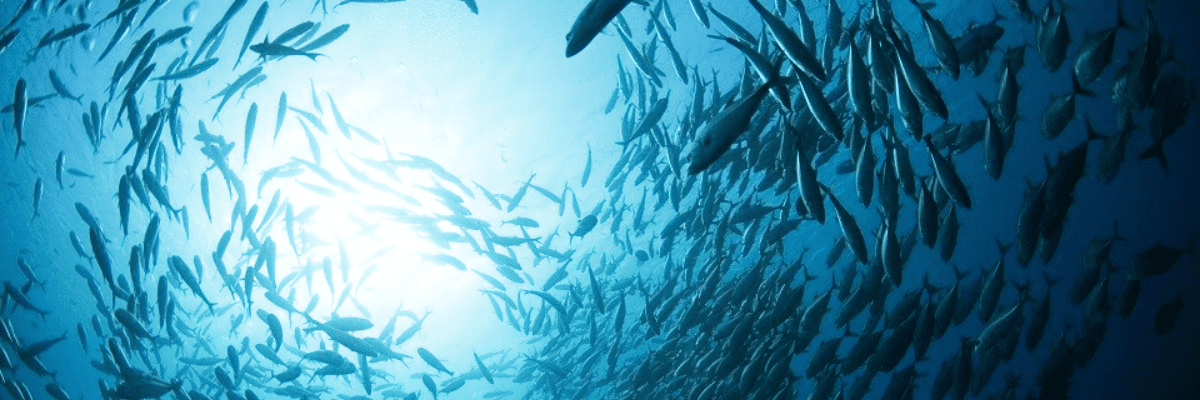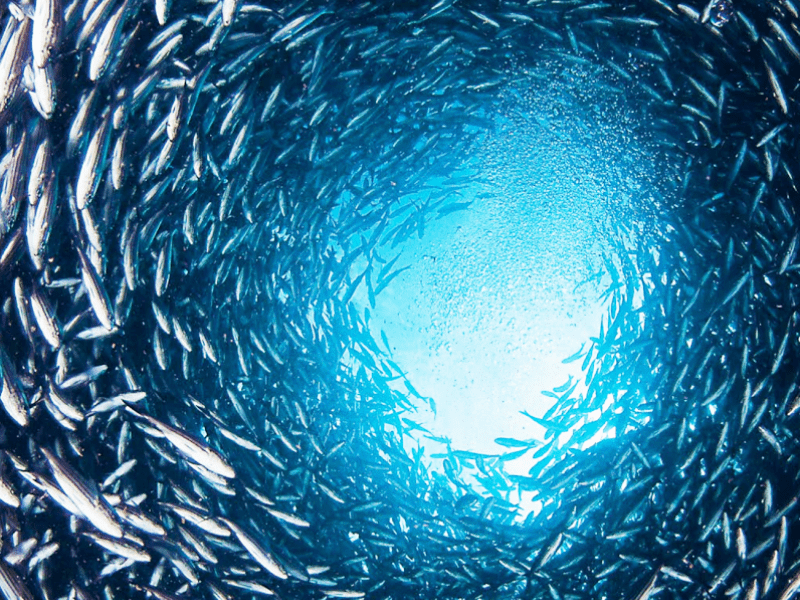For Resilient Ecosystems
Because it might save our oceans for future generations.
Traditional aquaculture has a terrible reputation. As the marketplace failed to meet the growing shortfall from exhausted wild fisheries, large-scale commercial operations ramped up over the last 30 years — often with disastrous consequences for entire ecosystems, seafood quality or welfare of the workforce. While all of these things are true, a level of context must be included: modern aquaculture is still at its early stage, making the industry ripe for A Blue Revolution through a series of transformative innovations and tools for positive change.
The risk of inaction is too high.
Critics would be fair to point out how most of today's farmed fish is unsustainable.
By far the greatest threat has come from rapidly expanding shrimp farm operations, which deliver higher economic returns yet create massive environmental destruction. Many of these poorly regulated sites have been placed in tropical and subtropical ponds near the confines of mangrove forests and pristine coastlines. Because pollutants and diseases accumulate over time, first generations of shrimp culture ponds were often left abandoned, only to be replaced by newer ones with more dangerous combinations of antibiotics, antifoulants, pesticides and nitrogen-based waste.
What we have learned is that outdoor commercial farming comes with many hidden costs too. Those concerns range from a flurry of coerced labour and disease transfers to genetic dilution, oxygen depletion and rampant seafood fraud, but exploitation of the wild fish stock is steadily undermining marine food systems at an exponential rate. Just as feed efficiency systems have improved greatly over the last decade, studies continue to assert that roughly 20 percent of the world catch is now forage fish — the vast majority of which is used for aquaculture feed or derivatives — putting added pressure on fragile ecosystems.
New technologies and operating standards have rendered traditional farms obsolete. Together, they promise an evolution for aquaculture to match biodiversity shifts already underway in agriculture.
A Blue Revolution for Indoor Seafood
Not only does it take a kilogram of feed to produce each kilogram of seafood, but also commercial farms take up thousands of square miles of aquatic terrrain, displacing natural breeding habits which produce this resource. And confining so many fish, shrimp or crustaceans in coastal pens, ponds and mangroves has led to massive levels of pollution and disease which destroy marine-life while compromising what ends up on our dinner plate.
Seafood is Moving Indoors
At King Prawn, we know a lot about indoor shrimp. We're deeply passionate about its potential to drive a local, sustainable and ethical model for an industry in dire need of safer, more resilient options. We also know what can happen to traditions when supply is curtailed due to regulatory quotas, environmental factors or systemic disruption.
We can do better for generations who now depend on what we do about seafood.
Technology FeaturesHow we use Cookies
We use them to improve your experience on our site. We're open and transparent about your time with us, and we don't engage in commercial requests for your information.
Accept & ContinueNeed to learn more? Privacy Policy and Cookie Policy

